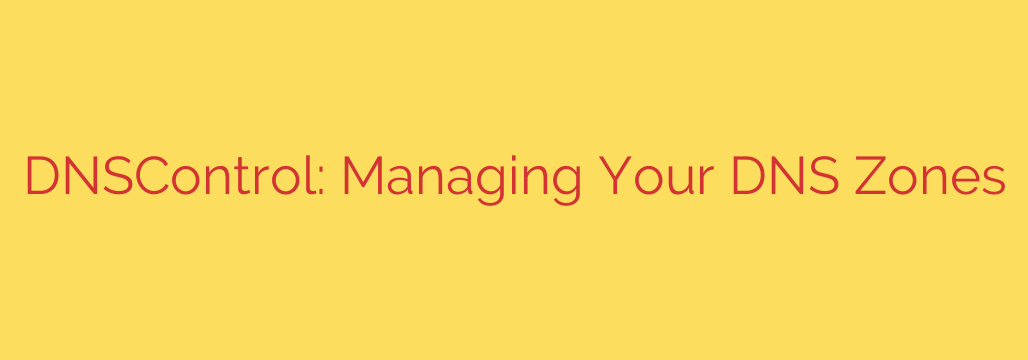
Take Control of Your DNS: A Guide to Simplified Zone Management
DNS, or Domain Name System, is the internet’s phonebook, translating human-readable domain names into IP addresses that computers understand. Properly managing your DNS zones is crucial for website availability, email deliverability, and overall online security. But managing complex DNS configurations can quickly become a headache. Thankfully, there are tools designed to simplify and automate this process.
One powerful approach is to adopt an infrastructure-as-code strategy for your DNS. This allows you to define your DNS records in a declarative configuration file, treating your DNS setup just like any other piece of code. This offers several key advantages:
- Version control: Track changes, revert to previous configurations, and collaborate effectively using tools like Git.
- Automation: Streamline deployments and updates, reducing the risk of manual errors.
- Auditing: Maintain a clear history of all DNS changes, making it easier to identify and resolve issues.
- Consistency: Ensure that your DNS records are consistently configured across different DNS providers.
Why is this important? Imagine you’re migrating your website to a new hosting provider. Manually updating dozens of DNS records can be tedious and error-prone. With infrastructure-as-code, you simply update your configuration file and let the system handle the rest.
Choosing the Right Tool
While several tools enable infrastructure-as-code for DNS, consider factors like ease of use, provider support, and community involvement. Look for a solution that supports your existing DNS providers and offers a clear, intuitive syntax for defining your records.
Security Considerations
Don’t forget the security implications. Access to your DNS records is equivalent to control over your online presence. Therefore, secure your DNS configuration files as you would any other sensitive piece of infrastructure code. Employ robust access controls, regularly audit changes, and consider implementing multi-factor authentication for access to your DNS management tools.
Best Practices for Managing Your DNS
- Use descriptive names: Clearly label your DNS records to easily identify their purpose.
- Implement monitoring: Set up alerts to notify you of any changes or anomalies in your DNS configuration.
- Regularly review your records: Ensure your DNS records are up-to-date and accurate.
- Utilize DNSSEC: Secure your DNS records with DNSSEC to prevent tampering and ensure data integrity.
Taking a proactive approach to DNS management is essential for maintaining a reliable and secure online presence. By embracing infrastructure-as-code principles and following best practices, you can simplify your DNS workflow, reduce errors, and gain greater control over your domain.
Source: https://www.linuxlinks.com/dnscontrol-system-maintaining-dns-zones/








